Don’t forget you can win incredible prizes like Adobe CS5.5, Kessler Shuttle Pod, Zacuto EVF by donating £10 or more to fund Prostate cancer research in my HUGE MOVEMBER giveaway. Click here for more!!
Ethics statement: I am not paid by Canon. I went to check out the C300 today on my own time (and a damn parking ticket for my trouble!) so I could see what it was like and report back here. I hope to do a review in the next 10 days where I can share my opinion on it. As always, fair and unbiased.
So November the 3rd is about 4 weeks ago now. The day both the Scarlet and the Canon C300 were released. The Scarlet looks like an exciting camera, despite some shortcomings, it has 4k and RAW. Two superb features. But it is not a cheap camera once you get what you really need, not bare minimum, but a proper set up to shoot and do post…I detail that more in my recent post here.
When the C300 was announced, I was underwhelmed…why? Well I like the look of the actual camera and the images out of it looked great, but it was 3 things. 8 bit out. 720p slow motion and most of all the price tag. $20k. Making it out of reach of pretty much most indie shooters out there.
The good news is that the price seems to have been slashed right down. Although no official street price is actually out. I am hearing about 13K Euros, $13k. Way cheaper. At this price, it is suddenly a contender again. Although only against the F3 really, not the way cheaper FS100 and AF100.
Honestly the Scarlet and the C300 seem like two different cameras for two different markets to me. The Scarlet is aimed squarely at the lower budget narrative crowd (though not the micro budget as it still costs a lot) whereas the C300 feels to me like a great large sensor broadcast camera. The specs meet the minimum broadcast standard for the majority of big HD broadcasters. 422 50mb/s in camera which the F3 does not do (420 35mb/s)
Today I popped into London, along with my rather sexy moustache, to see the C300 on the first day of its little roadshow across Britain. I wanted to get my hands on it and of course shoot with it. That will have to wait a couple of weeks when they said they will get me a camera to test out and review for a couple of days. Today was really a chance to sit down with one of the developers, Yoshifumi Satake from Canon Japan and Nick Millen from Canon Uk, to understand its features more and to actually feel it in my hands.
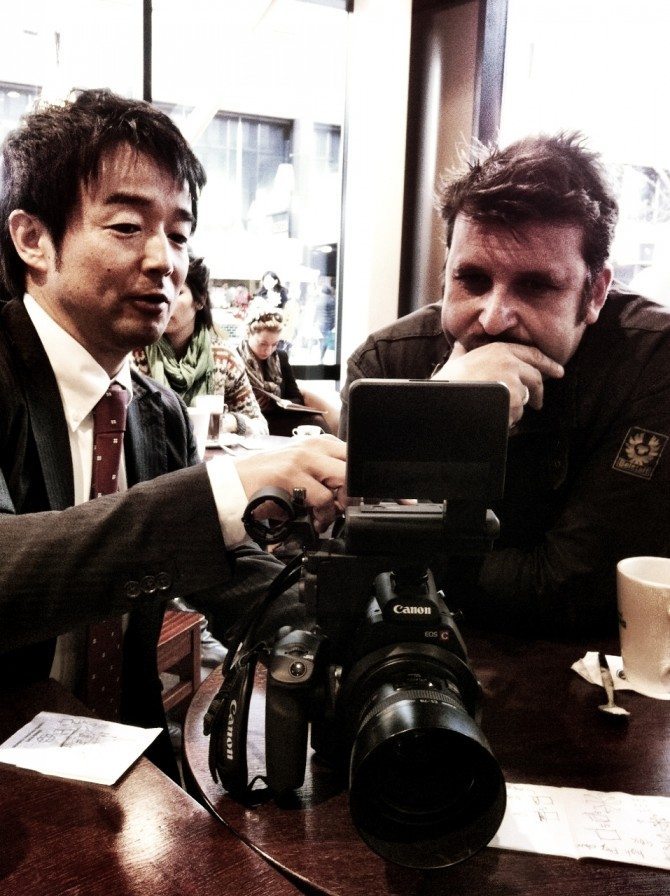
I was actually pleasantly surprised when I held it. It felt quite nice in my hands, compact and with a nice weight to it. The jutting out lip under the lens actually felt like a natural place to put my hand whilst holding it. It’s also where the threads are for tripod plates, making it more balanced centrally rather than placing the threads directly in the centre of the camera.]
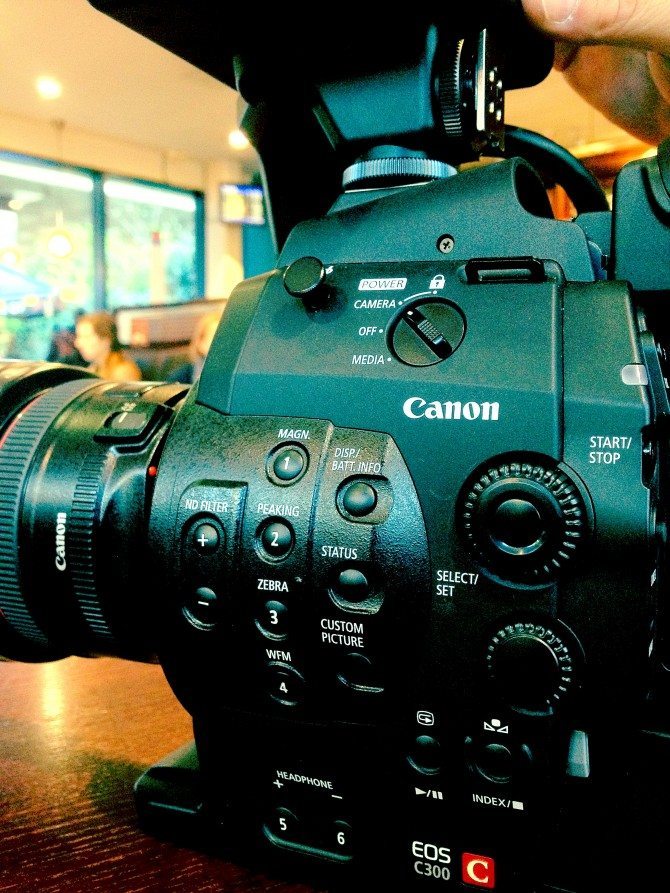
It was a great opportunity to ask first-hand lots of questions to Canon and get certain aspects of it cleared up. So this is what I learnt…
The 4k sensor captures 444 but the camera records 422 full HD. It is apparently a much better way to capture a full HD image than from a native sensor. It was explained to me via some nice napkin drawings by Yoshifumi Satake in Cafe Nero where we took the camera to chat, I wish I had kept them for reference.
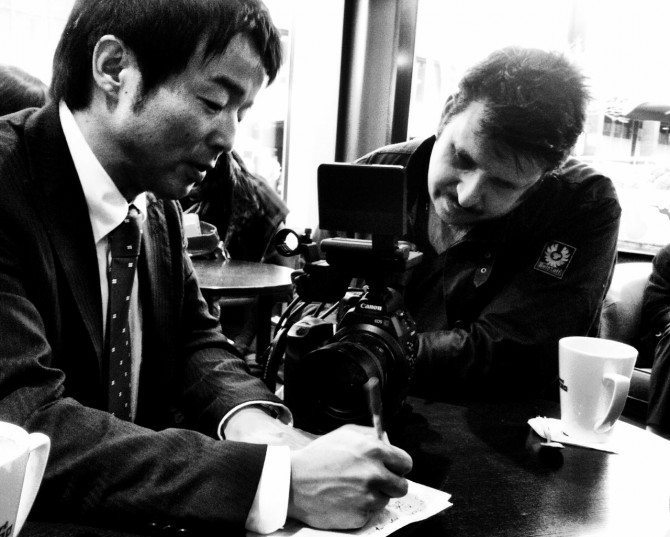
Yes, it only outputs 8-bit out the HDMI and SDI out (both work at same time)…it’s a real shame I cannot use my kipro mini to record gorgeous 10 bit ProRes images with this camera, just 8 bit. Again it was explained to me how the image quality was still maintained over 8 bit with more napkin drawings, but it went so far technically over my head it narrowly missed a passing plane coming in to land at Heathrow!!
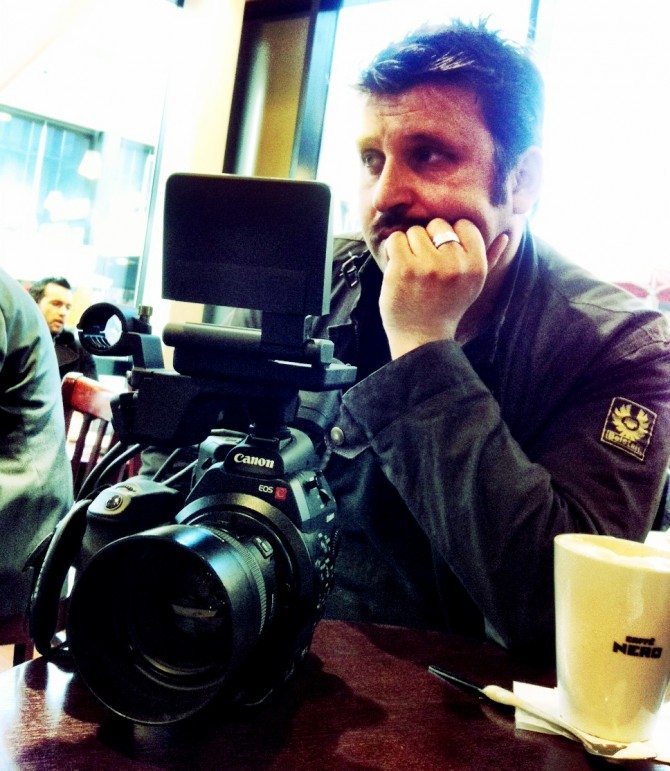
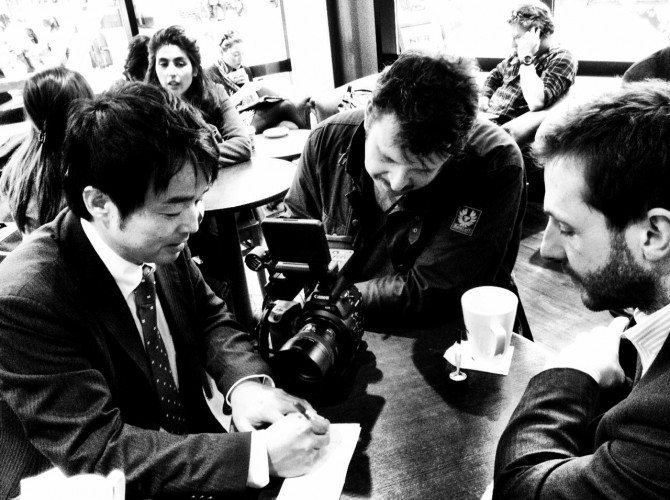
“Again, a pro of this camera crops up to dampen this con: The C300 is not a noise-free camera. Its noise is, in fact, quite lovely and cinematic. Noisy images don’t have to be as high-bit-depth as clean ones to look good. And a very gentle denoising pass can promote C300 footage to 16-bit without much loss in detail.
The C300 is crippled in ways that one would not expect from a $20,000 camera, but it is also empowered in ways usually reserved for much more expensive rigs. It uses a 4K sensor to make its HD images, meaning that all its internal processing is 4:4:4. It kills in low light and when it gets noisy, the noise looks like film grain.”
Now I cannot vouch for any of this as I have not examined any footage of the camera yet. I did shoot a couple of shots on their pre-production camera in the cafe just to check out the record buttons, but I didn’t take any footage home with me. I don’t want to do that. I want to do a full on proper real world test where I can put it through its paces in all aspects and see just how good this 8-bit looks.
I own a Canon XF105 so I know how good the 50mb/s 422 XF codec is, and that is what we have in there . It is the bare minimum for HD acquisition but it at least reaches it. Neither the F3, FS100 or AF100 do this internally. So this is a big plus. Of course, recording to an external recorder will make it better, but it will never be more than 8 bit, but as Stu says, if the noise hides the 8 bit then…
It’s a world camera. It shoots 23.98p, 24p (for film out), 25p, 30p in full HD. It also does interlaced. Yuck. Over-cranking up to 60p is done by dropping down to 720p. A real shame that. Again I will see how it actually looks soon. My XF105 was region locked to 25p. I paid £350 to get firmware onto it to make it shoot 24p as well. It’s nice that we have a world camera here, and so it should be for that price and if it is to compete with the F3 which has a similar price.
IS works a damn treat on the camera. I shot with the Canon L 70-200mm F2.8 IS Version II and at the end of lens I was shaking all over the place on my end handheld, but it was looking pretty damn solid on the screen. Damn that IS is good on that lens!
There is NO autofocus on this camera. I was told this was a conscious decision to steer it more towards proper camera operators than the 305 has currently. A lot of 305s are being used by shooting producers, which is doable due to the small sensor, although there is no real replacement for a proper dedicated cameraman, just my thoughts. Super 35mm is a whole different ball game. This camera encourages skilled operators to use it and that is admirable. There is a small wi-fi adaptor which transmits a low frame rate version to your computer. If the lens is set to autofocus, you can actually change the focus remotely. A nice feature, not exactly a wireless follow focus but a way of changing focus remotely if you cannot get to the camera if it is say, on a jib or perhaps you just want to mess with the operator and tell them they are shit for not getting anything in focus 😉
Iris…this is interesting. Both the RED Epic and Canon DSLRs change the iris in 1/3rd stop increments. Too big a jump for smooth changes in exposure whilst recording. The C300 has a feature called “fine iris” which I played with and was able to get much finer increments that the 1/3rd stop (there is also a 1/2 th stop one). I counted 2 clicks between some 1/3rd stop increments and 3 clicks between others. I will get this confirmed with the exact fraction from Canon shortly, but it looks more like 1/8th stop increments-ish. It’s not as smooth as a proper cine, ENG or de-clicked still lens but way better than the 1/3rd stop. When I played with the MTF services EF adaptor for the FS100, F3 and AF100 at IBC in September, their adaptor which was pre-production, gave you 1/8th stop increments too. It does make a big difference, especially, if like me, you shoot a lot of actuality where light changes and you have to go with it.
The electronic ND confused me when I heard about the camera. I did not understand what electronic ND could be. It was cleared up pretty fast when I found it was simply an electronically switched filter. It flips ND onto the sensor rather than rotate it around like a traditional filter wheel, which takes up a lot of space when they have to cover such a large sensor. It’s a pretty neat solution. You get 2, 4 or 6 stops of ND via the two buttons.
Build quality was quite superb, it looks plastically until you hold it, then it feels solid. It’s a metal frame and the front is made of magnesium to avoid any flex between the lens and the body.
The view finder wasn’t actually too bad! It’s the same as the one on the XF305 and with peaking and the magnify button (which works whilst recording too) making it easy to keep focus. If you use it in its minimal configuration and with a not too heavy a lens, it’s actually not too bad to hold even without a rig, that lip at the front really does come in handy here. Of course it you do want to do more longer handheld stuff then a rig would be useful.
There is no built in microphone at all. If you want to use XLRs then you need to add the (included) top module onto it. This does make the camera heavier and less sleek. It also gives you the LCD monitor to use. The Audio, Video and controls are sent via two proprietary cables. If you don’t want the bulk you can just use the 3.5mm jack like on a DSLR, it’s certainly better than nothing and coupled with a mic like the Rode Video Mic Pro you will get good sound, (I am assuming) you can still change the levels and of course it has a headphone socket!!

The camera has a base sensitivity of 850 ISO which is pretty damn good. Lowest it will go is 320, highest is a crazy 20,000 ISO. I am told by people who have used the camera it’s actually pretty good and the noise is very filmic at this level. Again, until I try it for myself I cannot say for sure.
There are two versions. An EF and a PL version. Same price. The mounts are not swappable.
The side handle is detachable and feels way more robust than the similar FS100 handle.
It has a gamma curve called C-Log which gives you a lovely flat image and a very nice dynamic range of 12 stops. I was told this was maintained all the way through to 20,000 ISO. Impressive if that’s the case. There are loads more options for gamma curves and other picture profiles, there is even a gamma curve which replicates the standard picture profile of the 5DMkII if that’s your bag.
There was a nice RGB histogram, vectorscope and a cool feature called Edge monitor which shows you via a histogram all along the bottom of the screen what is in focus and what isn’t. The higher the levels the more in focus you are. Neat.
Any button with a number is assignable to a different function. There are lots of them. I believe, with the top monitor, a whopping 15! This is achievable as the playback buttons, which are of course useless whilst recording, can be assigned to do things whilst in live mode. You could almost do with a removable skin so you know what’s what. I don’t recommend using a silver sharpie to write what you have assigned them to! 🙂
Battery consumption is pretty impressive. Not quite as good as the FS100 which can get about 8 hours off of one NPF970 battery, but with the larger battery (which are the same as the XF100/105 batteries) you can expect around 300 minutes of use. Not bad!
So my first impressions were very positive. Of course I haven’t done the most important thing, shoot with it…that will be soon. The proof is always in the pudding!
The release date for the camera is scheduled for January 2012. Not that far away at all!
After spending time with it today, it is clear that this really is a camera for a whole different market than the Scarlet which really is aimed more at narrative. This, as I said earlier, looks like a great broadcast 35mm workhorse camera. Not saying you can’t shoot movies on it, it’s the broadcast spec that is key with this camera and it’s for that use that I can see this being snapped up if the image is as good as I have heard.
Stay tuned for the full review with footage coming in December. Also my Sony A77 review, in association with HireACamera.com is coming up too…
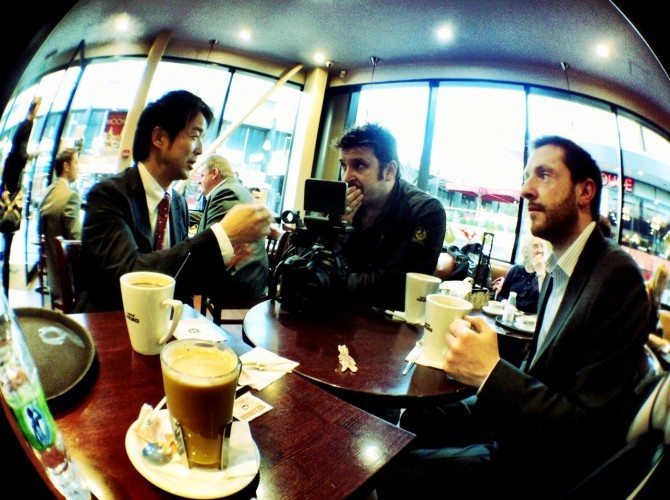
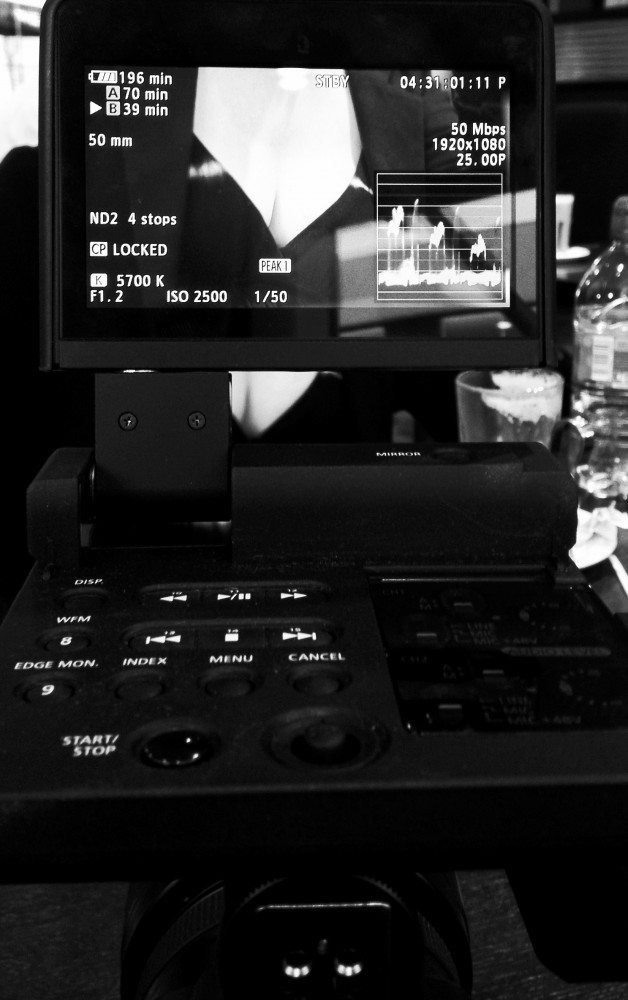


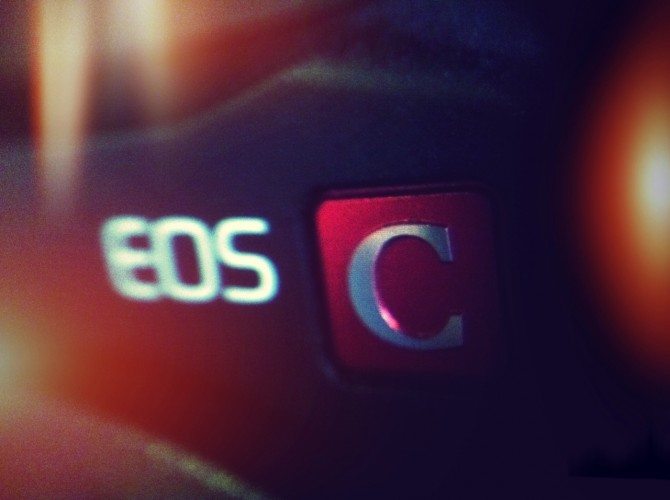
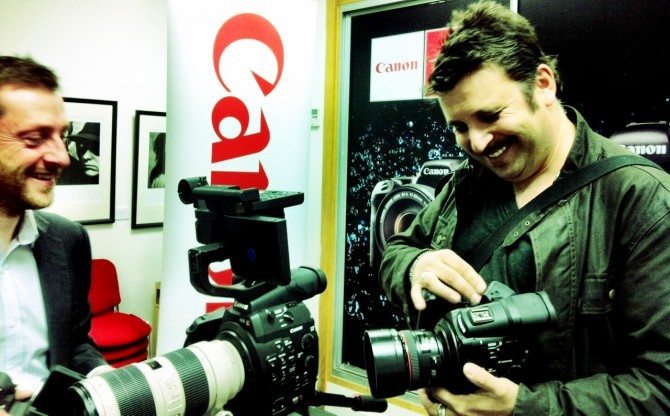
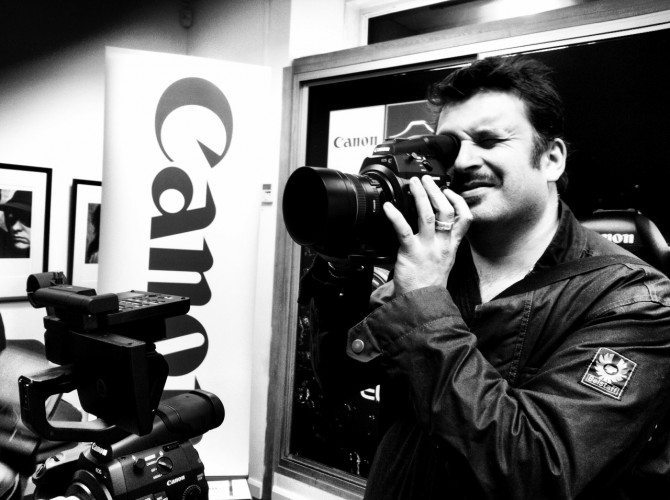
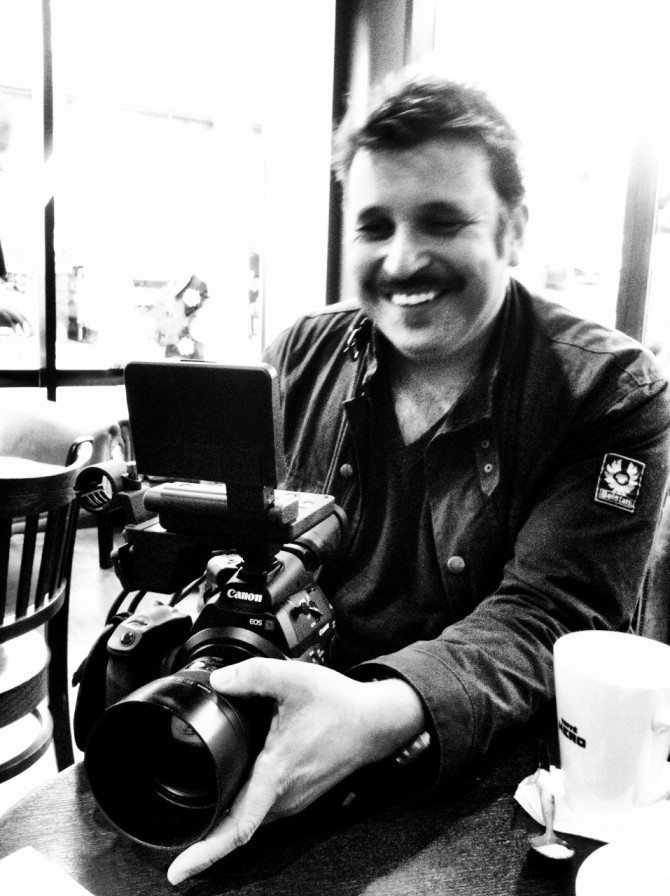
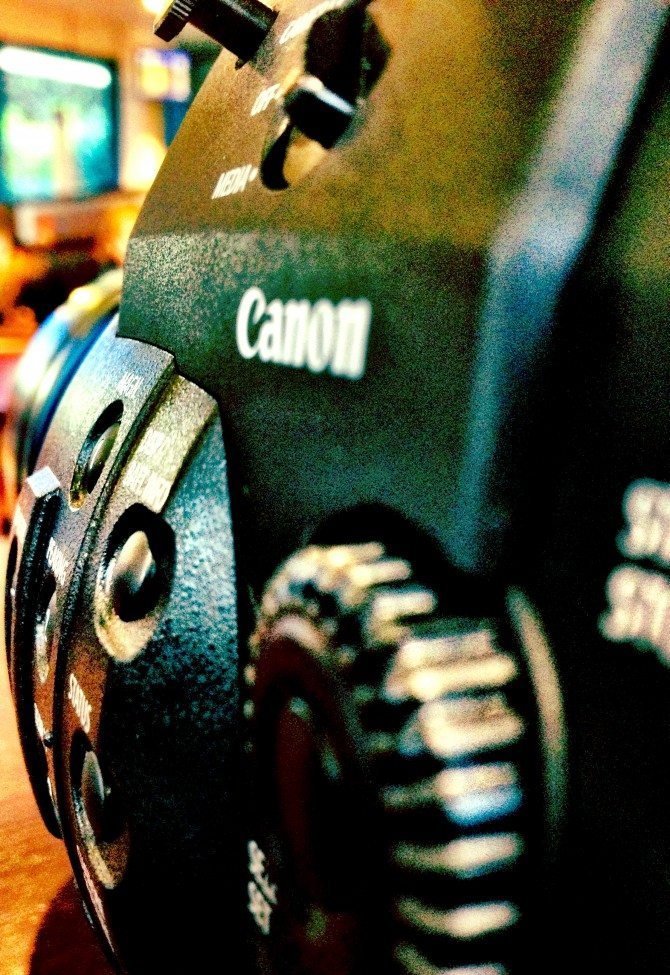
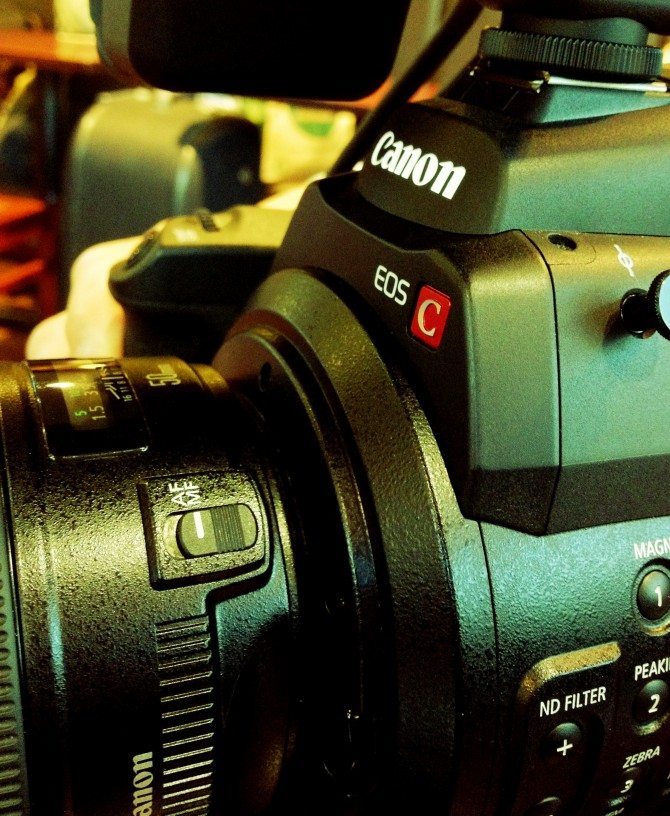
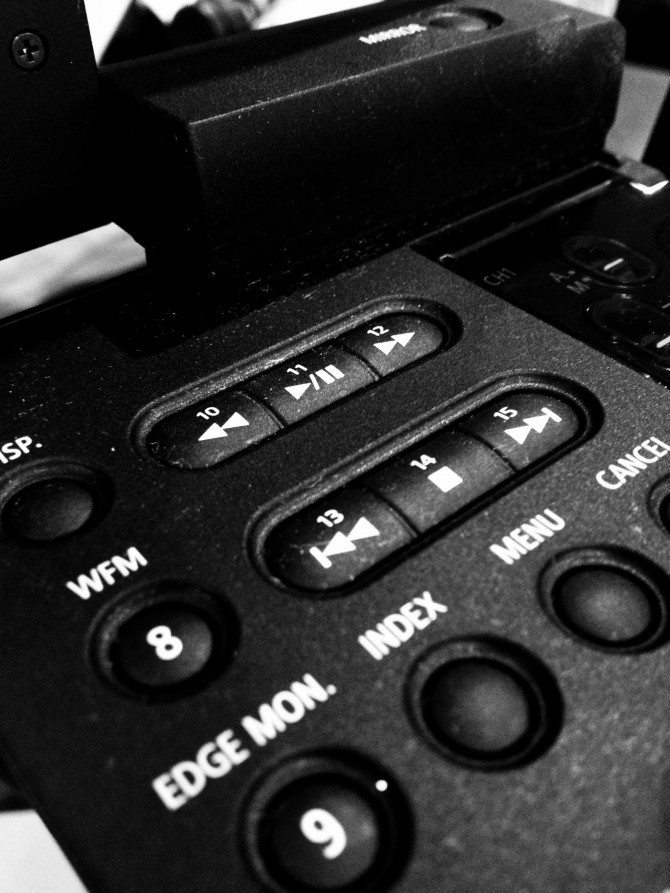
111 comments
Nice histograms
i wonder who that was. Look Aussie to me! 😉
I remember some of the early pro Hi 8 cameras from Canon
http://www.soadv.com/Merchant2/graphics/soadv/canonl1sm.jpg
This camera reminds me of this. I still think this thing is just a toy and not ready at all for practical use mainly due to its price and the competition out there. Kinda like an expensive party favor that you can’t have but its too cheap to even want. Don’t get me wrong if some one sas suckered enough to buy this thing now and gave it to me to shoot sure I would. But in all honestly I’d rather shoot with my canon 60D or canon XHA1. I would never rent or buy this camera ever for any reason. I think canon knew what we wanted but was so stubborn on trying to fix the wheel that was never broken in the first place. One of my jobs is to keep up with the latest tech trends in this entertainment world and I have to say Canon really let me down on this one.
One question I have for you MR bloom is there any rolling shutter or anti-aliasing or moire??
Also I would like to mention that I think the most aproprate thing to do here was just add the larger sensor in the canon XHA1 series but just make it so that it records the 4 k or what ever it does. Canons original HDV design worked all they needed was to update the the obvious quality stuff.
That’s a very outdated camera Robert…
I haven’t shot with it Robert as I said, so no way of knowing about image artifacts. A napkin was drawn for me explaining why there is none but I haven’t shot with it to confirm.
Not sure about the negativity. It’s now an F3 competitor. At $20k it was not. What makes you think it is a toy, it’s got some pretty high specs in there.
Also, how can you categorically say you would not even rent this camera? Seems rather final considering you have probably never shot with it either! 🙂
I remember you said something in an interview once where one of your early cameras was a Hi 8. And yes it was outdated. I was pointing out the fact that the cameras life was short lived tho at the time it was very cool with the interchangeable lenses. as far as renting yes I can be a bit harsh about the product but I am more frustrated canon did not listen to the obvious which was to create a camera that can fit in the hands of any indy filmmaker like the 5d mk2 or any of there cropped sensors cameras with 0 problems with rolling shutter and anti-aliasing or moire. I think that is what allot of the community would have wanted. after all the shear number of us who are dying to get out our ideas to theater are hindered by some of the technical short comings. However I will say this. the reality is that Canon did change the world when they came out with there video DSLRs and proved to all of us that these cameras with the level of quality it can produce for the price is outstanding and a god send to all of us artist. I really do feel that canon would have never added the video feature if they knew what the camera was capable of for the price. But I am standing ferm on the renting factor. I would much rather rent the scarlet then the C300 any day. and I still stand by my canon 60D. Some people swear by the 5D mk2 but honestly I am a fan of 16 mm film and the 1.6 crop gives me that feeling like I am shooting 16mm film. Its a nice feeling to have. This is one camera I won’t be letting go of with in the next decade. I truly think the 60D can handel the test of time but I can’t say the same for the C300. The whole red series however I will say that may last the next 20 to 50 years just because we have finally met the pinnacle of what digital cinema should be. I am really referring to the early days of cinema when we did not have auto anything. and sense the DSLRs came out they finally forced people to use the camera as if it was traditional film. Thats why I love canon DSLRs so much. its that simplicity factor. The canon C300 has WAY too many bells and whistles. sure its nice to have add ons But if it takes away form my ability as the poor starving artist to afford the thing then it has no value for me. When I pick up an arri 16mm film camera its always ready to go once I put in that mag and the battery pack and the lens. Can’t get much simpeler then that. That is what I want Digital cinema to be. Just straight forward simple and ready to go.
Though your impression seems positive, I dont see this anything other than an fs100 minus many features that makes the fs100 awesome for 5k. I this if cam was around 5000 or 6000 that would make sense, anything more completely makes it obsolete before it’s even released. Furthermore, any camera company pushing 4k, whether it’s downrezzed in camera or not, is not interesting to me. Having used an Alexa I truly believe what makes digital camera “filmic” is some sort of dual gain hdr, not 4k. Would love to see a sub 10k camera emerge that gets Alexa dynamic range over 4k any day.
It does offer a fair bit more, especially the internal codec which is broadcast spec. The FS100 is not. The science behind it looks impressive. But as I said Richard, no conclusions can be reached until I have actually shot with it. It certainly feels like a better camera in your hand than the FS100 but it’s twice the price (and a bit more)
Hi Philip,
Just what does broadcast spec actually mean? Isn’t it a relic from a distant past with nacent digital tech when the tech departments at broadcasters just said “make it 50Mbit/s MPEG” just because it will be downconverted, AD/DA passed, transcoded and encoded so many times that we wanted to end up with something that’s visible/archivable?
I think this question is very valid these days. Things change and so should specs. People who know what they’re doing in terms of grading and always refer back to the source for any transcoding passes will be fine with a lower spec’d source codec in 4:2:0.
If broadcast spec really is still is a factor, then how did they ever manage to release House, which was shot on a 5D, like so many commercials these days?
Sure, you can do *more* with 10-bit 4:2:2, 4:4:4 or even RAW, but I would choose a well-shot DSLR film every time over a deep-focus “professional grade” 2/3rd inch sensor, regardless of the codec used.
didn’t i already answer this in another question yesterday Richard?
Most large HD broadcasters, for full acqusition, require a minimum 50mb/s 4:2:2…why? Ask them. To maintain quality? To be a pulled a lot? Both of those but mostly to stop any old “HD” camera being used (don’t forget even the bloody iphone 4 shoots full HD video so they need to set a benchmark…without it where is the quality?
You can argue against that until you are blue in the face, I do agree with you to a point, and if you really want to use the House argument then go for it…It’s a great argument for how great the 5d is but it required a lot of post work to hide the issues. They were having issues with the broadcaster on the last season as to whether they could use it for a C camera like they were for a lot of the nightime stuff.
Large HD broadcasters issues this guidance spec for their own reasons…you can ignore them but your camera won’t be approved and therefore your show cannot be shot. As i said above part of why is to maintain quality and to make sure stuff in HD looks good. Just being 1920x1080p is not good enough. If they set the benchmark low then production companies will use the cheapest camera they can, rather the right camera for the job.
One of the reasons the BBC refuse certain low bit rate cameras is not so much for broadcast but for bluray they don’t want the finishing format to have a higher quality than the acquisition…understandably.
Best
P
Could be that you answered it already… I managed to read up until this comment.
So far, my work is made for online, so basically I have nothing to do with these “broadcast specs”. Maybe that will change in the future, which is also why I’m looking towards a new A-Camera. I guess this would rule out the FS-100 and F3 without an external recorder. Now, should I go for the C300? I really look forward to your hands-on shooting review.
Maybe a hacked GH-2 at 42Mbps with a Voigtlander 25mm 0.95 will meet the specs or is AVCHD out of sight for broadcast purposes anyway? This video sure is convincing for me in terms of nightly stuff for my upcoming projects: http://vimeo.com/32204670
I guess the BBC will keep up their high standards, but I recently heard that segments of one of my productions will be featured in a TV show – regardless of the quality of the codec.
Yes. A percentage of any show can be shot by an unqualified camera. How much depends on the broadcaster…
A hacked gh2 won’t qualify. Its not a factory spec.
Philip, sorry to correct you but the C300 is 4 time the price of the NEX-FS100 (Nex-FS100 is US$5000 and C300 is US$20.000)
Hi mate. I do say in the blog post the street price is actually going to be closer to $13k
“They blinded me…with science!” haha just kidding. Looking forward to your hands on review. I have a sneaking suspicion you’ll make magic with it nonetheless!
Can’t for the life of me understand the 8bit, worse still no 10bit out. I assume there is no 1080 50p.
Will you be comparing it with your F3 as this is the camera that Canon seem to be gunning for.
Is the VF as good as the FS100 in your opinion.
yeah the internal codec is great but such a shame no 10 bit, but let’s see how it actually looks….
I will of course be referencing my F3 a lot as it sets a great benchmark.
The VF is good. I actually really don’t like the FS100 one. It’s better than the F3 for sure but not as good as say a Zacuto EVF
Do you think it will sufficient and appropriate to shoot with Canon EF-L lenses on the C300? If this is the case it would be a big advantage compared to the F3. To shoot for Tv with he F3 means getting something like a NanoFlash-recorder, the rig and expensive lenses.
only because the F3 does 4:2:0 in camera…
Looks like the start of a great review, can’t wait till you get a chance to shoot with it.
Also, I’d love to get that “gamma curve which replicates the standard picture profile of the 5DMkII” for my XF300.
Great hands on preview,
Looking much better with the newer pricing! (closer to where it should be)
Glad to hear the body and build of it feels solid + well made.
Really though – as you said the proof is in the pudding , looking forward to seeing / hearing some thoughts on IQ in comparison to the F3 (and later the 1dx!)
Ideally, I think many were hoping for:
10 bit HD-SDI out ( 8 bit internal is fine )
1080/50p
Swappable PL/EF mount
priced at $9999 for EF mount, $11,500 for PL.
( 1500 for PL mount , $999 for EF mount as separates )
Still a great sensor and codec – and the noise/IQ is yet to be fully determined, just a shame Canon could not put it closer to 10k to really undercut the F3 as it is now.
One thing I do not understand, is why they left out an AF button for EF lenses? not continuous , but identical to the AF button on a SLR. Seem’s like it wouldn’t be hard to integrate, and useful for run and gun / broadcast type situations. Does not make sense that a scarlet/epic will be able to do that and Canon’s own camera can’t…. :O
So do you think as time goes by, Canon will release updated models of this camera or simply release firmware updates that unlock the 4K, 10 bit Color depth, 60p at higher res and so on?
I think this is going to be the killer camera for broadcast this year. Many of us have been bolting nano flash’s onto f3’s all year to make them paletable for HD broadcasters but that is quite fiddly on a hectic shoot. 50mps really nails that problem and is big news amongst my peers. Also if it comes in at 13k that makes it very cheap for the Market it is intended for. I looked very hard at the scarlet for my Shoots but know that the post workflow would put many off in the broadcast doc market.
I understand your 8 bit worries but reading vincent’s experiences grading Möbius seems to dampen those fears somewhat. Anyway proof is in the pudding and I’ll be testing it next Friday as it does the rounds in the UK. Really hoping it lives up to the excitement generated so far.
yeah it was explained to me not to worry about 8 bit and i sort of understood. But i always need to believe with my own eyes!!
Hi Philip,
I have written a 184 page screenplay which is a romantic comedy. It will require a camera that can perform well in low light situations and can do slow motion. Do you think that the fs100, af100 or gh-2 can be used to capture an image which can be good enough to project to the big screen? Or do you think the more expensive cameras like the scarlet or c300 are needed?
all but the gh2…no slow motion. any of those would work. FS100 has great low light. Poor internal recording…
When you say the fs100 has poor internal recording do you mean that the image from the fs100 will be a lower quality? Could twixtor be an acceptable solution to create slow motion video from the gh-2 or c300?
i mean the 24mb/s is low. it’s ok. but not good enough without an external recorder for shooting for HD broadcast.
Slow motion in post is never a replacement for doing it on camera!
Oh this is slightly misconstrued…let’s be fair here. The fs100 records a very efficient codec…AVCHD, made to provide better compression and more efficient interpolation, smaller pixel blocks, etc than most other compressed codecs, including xdcam and especially standard h264 mov. Just because certain broadcasters don’t accept this codec or the bitrate is lower doesn’t make it inferior. It’s just more efficient. http://www.dvxuser.com/articles/article.php/25.
mmmm….well i have shot a lot with it and had issues with it..remember Richard. This is my opinion about it. Everything on this site is my opinion. Everything must be read as my opinion.
It is 24mb/s H264 rewrapped in an AVCHD wrapper. It’s fine for most use but it’s not that robust. Again…my opinion! 🙂
p
I know and I’m not knocking your opinion…and I can contest that avchd is a pain to work with in post…just wanted to point out that it’s actually very robust. 🙂
Yes Richard, it can cope well, dependant on the camera’s implementation of it. But there is a reason why the gh2 has been hacked to give it a give it a higher AVCHD bit rate. 24mb/s is low, bare minimum. I remember the 17mb/s of the gh1 and it was all mush. I would love to see the AVcHD codec pushed to higher bit rates by the camera manufacturers, giving us the option of how much data we want to use. External recorders are cool and pretty much essential on most of these cameras but wouldn’t it be nice if we could do it all in camera? I know cost is a factor but nothing wrong with dreaming.
And I’m not trying to be a fs100 fanboy here…there are different cameras for different jobs, I just see the c300 much closer to the fs100 and even inferior in capabilities in some ways (like 1080/60p) than the F3. F3 is a 10bit camera, granted only recordable via external but still is on a completely different level.
Just my 3 cents, looking forward to seeing your review.
but Richard. You are saying don’t believe in numbers but then are assessing the C300 without having used it…just on the numbers…see what I am getting at. As you said numbers are not the most important thing. Let’s see how it is when shooting with it!!
But we’ve all seen numbers (and prices) as well as images. I’d be shocked, given these specs and image, if you or i or anyone else discover any golden features while using this camera make it worth it’s price. But I’m open to it and am looking forward to your potential discoveries. 🙂
24 mb with discovery seems to be the norm, they will accept a sony at 24mb/s but not a Panasonic, hum do you think there is a little bit of politics with that rule?
is that a fact? Not heard that before…
10 bit, AF and a xlr without the top would have been nice.
But looking forward to your upcoming test results.
I too spent time yesterday with Yoshifumi and Nick looking at this camera. To those who continually rant about how disappointed they are, I really think you are missing an important point.
What Canon have done here is create a camera which isn’t trying to compete on specs. What they have concentrated on is how the picture looks. The output of the camera.
When this camera was launched, they went to great lengths to get this into the hands of professionals who actually make films, and screened the results BEFORE anyone at the presentation knew the specs. Why? Because the specs on their own mean absolutely nothing. They wanted everyone simply to see what it can do on the big screen.
Larry Thorpe at Canon, one of the greatest brains behind the sensor technology, once gave a talk at Panavision about imaging technology, sampling theory, and 2k vs 4k. One of the points that was made at this talk 5 years ago was that camera specs per se cannot be compared between cameras and manufacturers due to the alchemy of technology that goes on behind the scenes in producing the image. Because so much of it is a secret sauce you really must only judge the image for what it is. It doesn’t matter if its 2k, 4k, 8 bit or 10 bit. If it looks good then think about using it.
So if the word of people who have seen, used, and already made films with the camera isn’t enough, wait until you’ve shot your own footage until you make a judgement.
When Arri launched the Alexa, they had RED ONE 4k marketing to contend with. What they didnt do was fuss about the cameras 2k vs 4k RAW specs etc. They invited people to use the camera and decide for themselves which was better. And we all know what the answer is now.
I personally am much more interested in a camera that has been marketed for its image quality (C300) than a camera that is being marketed on its specs (RED).
it was the “to those who continually rant how disappointed you are”, i guess you meant “they are”!
Strange marketing by Canon. It is 1/12/2011 and B&H and others are not taking orders and have NO Price for C300 at the moment……very strange.
Could there be Price Drop to $10,000 🙂
Seems in France that the price is announced at 12k Euros. (without taxes)
I’ve heard somewhere that it also will be at 12k US Dollars.
Well said Gordon !!!! I agree 100%
Will test one of these as soon as possible. If it turns out to be as I think. We will get two of them for a feature film to be shot in april may.
This year shot a feature on a RED ONE MX.. That was often a Nightmare. Lots of problems and let downs. On a production with a crew of 50 or more you need a reliable camera. RED will never be reliable.
A bigger project project will be shot on a Arri Alexa Studio with Hawk lenses.
Would like to test the Schneider Cine-Xenar on the Canon C300..
Cheers!
With the price drop, it is certainly a really good containder.
Niw I can’t wait to see what YOU can get of it.
Will you do some comparison with the AF100 and FS100 ? It would be nice to see I think.
But the fact that it has ND filters, a much nicer expected price tag and a 422 50 Mb/sec codec on board makes it really interesting. (in fact, that “XF Codec” is just a Canon wersion of the XDCAM HD422 codec isn’t it ?)
Did they tell you something about some future firmware upgrades to make the camera ouputs 10 Bits via HDMI or HDSDI ?
to me, the c300 is a 5d2 plus better image quality minus tons of nice photo features. i would buy 2 c300 if it would cost 5000 euros. for 13.000 euros, i definitely buy a scarlet, as 4k, 2k 60p and hdrx are 3 REAL moneyworth features besides just the one feature of a better image quality than the 5d. canon does better come up with more impressive features in 2012.
hi doug,
you have over simplified what the cameras do. they are, in my opinion, two totally different cameras for different jobs. did you read my scarlet article at all? you talk about the cost of 2 5ds, comparing to a c300 but you dont mention that the cost of a proper shooting, post package for the scarlet is a hell of a lot of 5ds!! just please make sure before you spend your money that it is the camera for you….that goes for any camera really!
Best
P
haha, yes i did read your scarlet article and nearly any other word that did appear in your 4 year old blog. of course my comment was simplified. but anybody who did film with a 5d is interested in the new quality and features that the c300 – and probably also was hoping these features do appear in the 5d mark3 (which of course would also have all the photo functions on top) with a much lower price. to me there is no justification that a c300 does cost 6x as much as a 5d. the product c300 in itself is cool. as far as i calculate it, a good red scarlett starter kit is app. 14.000 euro (batteries do last longer than in the epic and less frames needs less ssd storage, which makes it cheaper!). the scarlett has a photo function, the hdr feature, 4k and 2k 60p for maybe just 2000 euros more than the c300. that’s just 15% more. compared to the 600% more we have to pay for the c300 compared to the 5d, thats no big deal.
Hi Doug,
I am worried when I read things like this. I wish it was that cheap but as I detailed in the other post, the reality is far from it. You are talking about around 40 minutes of recording and just over an hour of battery power. There is no way on earth I would ever go on a professional shoot so under equipped.
I know you see two cameras launched on the same day, you see a spec sheet for one, a spec sheet for another and you compare. You can’t. This really is not apples for apples. I would call this apples to passion fruit! Two totally different cameras for different jobs.
It will always come down to the right camera for the right job. Again until I have shot with it, it’s hard to say but the c300 despite its confusing Hollywood launch, I feel is much more of a broadcast camera. Easy to use, codec which is approved. It’s a workhorse and if the image is as good as I am told then it will slot in very nicely into that world. The Scarlet will always be a paired down Epic aimed at a very specific market. It can become an expensive proposition when you take into account a proper shooting set up and post solution. For current red users it will slot seamlessly into that. For new owners, you’ll be surprised at just how much money you need to spend.
People should be comparing his camera with the f3 and look at the pros and cons of those. Not against the Scarlet. Only analogy I can think of is one is a small boat. One is a small plane. Both will get you to your destination but you still wouldn’t compare them against each other. You either want a boat or a plane. Right?
All of these cameras now that we are getting away from DSLR affordable prices require a business plan to make sure that whatever you decide upon is a sound investment. We aren’t talking about paying for a camera in one or two jobs anymore.
I don’t want to speculate about the image of the Canon anymore. I won’t offer a proper opinion until I have shot with it, even then, this camera won’t be for everyone, there is no such camera. If you want to write to me via email before making any purchases I’m more than happy to help.
P
Thanks for your thoughts Phil, waiting for your shooting now!
C300 seems to be a really nice offer (the picture aesthetics of 5DmkII, but sharper and without moire and aliasing would be a fantastic thing!) if the price goes down. And in this competitive market I hope it will be reduced.
thanks. wish it had aesthetics for 5DmkII, but it’s Super 35mm not full frame. one day!
I’m keen to know how the 1DX stacks up against the C300. According to the Canon USA website, the 1DX is supposed to have a 2 stop low light advantage over previous cameras. Obviously the codec isn’t up to HD broadcast standards and audio monitoring could probably only be achieved using an EVF headphone jack – like the Cineroid. But the full frame aesthetic would be hard to give up after experiencing the DOF versatility of the 5DMKII.
me too!!
Do you think the Zacuto follow-focus of the 5d will fit on the C300?
Best Alfred
it will…
I have been fortunate to grade some C300 footage (while not having actually seen the camera!), and I can say I was pretty impressed. It was fairly simple interview footage, so fairly limited in its scope and not an extensive test. But that image really looked like a full resolution uncompressed still. I have never been convinced that Red footage was so crisp at 4K that there was any benefit to going over 2K. I would have to say that the C300 image compares well with the Alexa, which is quite an achievement. Unfortunately I think the camera was on REC709 (or similar) rather than log. But even with apparently crushed blacks, I was able to pull up quite a lot of shadow detail without introducing noise (always a good test). Did I mention the skin tones, and highlights? Would love to see this out on a sunny day with challenging shadows.
Given the number of ways in which it is going to be way less frustrating to use than anything from Red, plus the more aggressive pricing, I would jump at it. Certainly if it was offered against a DSLR.
A head to head with the Sony F3 is probably the most relevant test.
Hi,
I work at the BBC in Lond-oin. With the Canon305 – it does everything on the tin for broadcasting. 50mb/s – yup, ND – Yup, XLR – Yup infact at £5k this is pretty neat camera. Yet we know its problems – 1 lens, 1/3 sensor..but it ticks the BBC box and it probably ticks the ‘corporate box’ and for the price its fantastic. I mean i’d love to ask Canon – why didn’t you put the full sensor in that?
If the canon C300 is say £8,500 in the UK, then add on lenses – say £4K each then it just becomes unbelievably expensive.
So I’m glad Canon have revised there price listing. But still – realistically – is anyone going to have the wonga to buy it?. Phil – that 30-300mm lenses – did they give a price on that?
best
Nick
hi nick
i am not going anywhere near the PL lenses. This camera works a treat with my EOS lenses. Pricing on those zooms is a lot!! I think just look at it as a competitor to the F3. That camera is selling a lot, both offer competing high end features. F3 does some things better than C300, C300 some things better than F3, mainly in camera broadcast HD acquisition. That’s a big deal and that is where it will sell I think…
HI Philip, when you will test the C300, do you plan to make a green key test ? I’d like to know how it work in chroma key, because it has a 2 green photosites per pixel, 1 red, 1 blue and a 422 codec, that’s seems great for green key !
Great little first intro, thanks for sharing – REALLY looking forward to your proper hands-on / ‘shoot something’ review.
Stu’s blog said the 720P 60FPS might (is?) be scalable in post back up to 1080 due to the lack of compression artifacts & pleasing noise signature. Please PLEASE test some 720P 60FPS footage conformed/scaled to 1080P 24FPS if you have time! Would be very much appreciated. Or make some raw 720P 60 footage available for us to download & play with 🙂
Vincent’s MOBIUS really convinced me of the capability of the C300 for regular narrative … I just need to get some answers regarding slow mo before dropping money on what looks to be a very solid ‘now proof’ camera for the TV / HD / promo / web crowd.
“Please PLEASE test some 720P 60FPS footage conformed/scaled to 1080P 24FPS if you have time! Would be very much appreciated. ”
Likewise. IMHO this is the main thing that seems off about the camera. Especially if they are saying 8-Bit is good enough. I would love a test for 720P upscale to 1080.
Thanks Mr Bloom!
But just noticed the ‘Washing Machine’ dial in the photo labelled ‘The lip under the lens…’
It seems that Canon have to ensure that every camera they make has a design element that’s a real ‘forehead slapper’ that helps us recover from the sudden hot flushes of desire when they release a camera.
So, we have to spin the washing machine dial from ‘Camera’ through ‘off’ to ‘Media’ when we want to show our Dear Client what they’ve got? That was the one thing that shooting data rather than tape that clients loved – instant access to what we were doing. Moving beyond ‘last clip – play back a few seconds’ and into full-on ‘gawp’ mode with fast forward, rewind and clip-skip, that wonderful EX1 wait really let people know that something awesome was going to happen. Sometime.
The big jaw-dropper for me on the F3 was the absence of a ‘media’ mode – it was just ‘there’ all the time.
The huggable feature of the FS100 is the ability to ‘do an F3’ and you hit a button and there were all your shots (pity you have to be in a different mode to skip around quickly within a clip).
And here’s the Canon with a ‘non synchromesh’ gearbox that we have to stop, change into neutral and engage ‘reverse gear’ mode, rather than do daring and client pleasing ‘handbrake turns’ in media browsing like the F3 can.
Odd, how some features that seem like an afterthought can end up being really important for niche markets like Corporate.
Good post Philip,
What I’m interested in is what this camera can be pushed to in future firmware updates if at all. Could we see higher frame rates in the future? Higher bitrate? Even 10bit HDMI out like Bastien said..? I wonder if there will be other improvements in the future..
I know this is all guesswork and wishful thinking and actually the more I read about the C300 the more it’s pulling me towards it and away from Scarlet.. Will have to test this baby and see!
Glad to hear the viewfinder is good. Pity it’s not Zacuto EVF good.
As for 8-bit. I believe that technology is pushing the laws of physics. Remember when a 1/3 inch camera for broadcast wasn’t quite there.
Serious ENG cameras had to be 2/3 inch – now that thinking is changing.
My point is that I agree with Philip that there’s no point judging the specs until one can test it for themselves.
One thing I have been wondering about – rather than having to choose between a PL or EF version, why could they not have made an adaptor to allow you to choose and swap between the two.
You buy the camera with adaptor for either lens type, and if you want, you can buy the adaptor for the other if you need it.
Unless it would have added (a lot of) extra cost to the camera, or something. But it does seem a possible sticking point, being limited to the one choice.
afraid it is one of other. dont forget nikon lenses fit just great on canon mount with a simple adaptor.
Hi,
Where is IRIS WHEEL on c300?
Since EF lenses are not Parfocal, buying PL body with RED Pro 17-50mm T2.9 and some PL Primes could be the way to go.
For TV work, EF zooms are not easy to operate…
Anyway Nikon d800, Sony A99 are here soon with Full Frame sensor and do not forget New Canon C 4K DSLR. Canon c300 as nice as it is is not “future proofed” , so price of it should be no more then $10 K…..and hold on to your seats, Sony F4 will be here for NAB2012.!
the iris is on the handgrip….full frame will be cool. the 1dx looks great.. the canon c 4k dslr is a concept dslr. remember…concept…that means it won’t come out in its current form…
Thanks again.
So how would you control Iris on EF lens if camera sits on Tripod?
that’s an odd question Jiri! Via the camera controls, the wheel on the grip or one of the wheels…
Nor Really Philip.
2 wheels on the side are in wrong spot.
How about this humble solution?
http://www.pchood.com/film%20lens
Who wants to bite the bullet and be the first ?
Jiri
Am confused. I think your issue is with Canon lenses not the camera. You link to a cinema lens with an iris on the lens…what is your point? If you want the iris on the Canon lens itself, then no camera, not even a RED Epic will give that! All iris controls are on the camera. Just like any DSLR.
If you want to use the Canon mount and not the PL mount C300 but want an iris on the lens then get Zeiss ZF lenses like me! But that won’t make sense for many, much like your solution of buying the linked lens. A lot of people who already own Canon glass are looking at this camera. A solution is not to replace that glass!
P
Philip,
If i use EF glass, i do not like IRIS CONTROL WHEEL on left part of c300. It is too far back. It is much better to have it closer to lens or under the EFlens. Regarding ZF Zeiss. Nice glass but nothing fast on wide end and opposite focus direction. It is time for me to invest in PL Set. Russian S35 illuminas look good at $35,000. All T1.3.
Another choice to try Chinese ZE rehouse of Zeiss. Might take risk on cheapest one 50mm f1.4 at $1,000.
Thanks jiri
Jiri
you have a problem with Canon glass. that is fine…you forgot the iris control on the side grip of the handle. PL is great but sometime impractical and gets expensive…$35k is a lot of money for many people and the optical quality of L series glass it wonderful. Worked great with the Epic.
Philip can you buy a adapter if you want to use another mount?
I know the Canon 7D some people modded it to have a PL mount.
no afraid not.
Philip, thanks for the review and waiting to see what it actually does before having a full opinion.
There are so many people obsessed with the specs that they forget the proof is in the image and what you can do with it in post.
From what I have read the 8 bit that it encodes is actually, in simpler terms, a super 8 bit. So it may do what it needs to in satisfying the masses.
I was very impressed by the shorts done with the c300 but unfortunately we don’t get to see the final product on a big screen which makes it tough to really dissect the image.
I truly believe Canon will have another large sensor video camera in that FS100 and AF101 range. I don’t see them leaving that entire market to Sony and Panasonic. It would not make sense because so many smaller production companies like mine are easily in that range where at $16k it’s a tougher investment and really have to justify the cost. Not to mention how many of us are heavily invested in Canon glass.
Regarding viewing on a big screen – this is not exactly what you asked for, but – Vincent Laforet has the full 1080 HD download of MOBIUS available at this blog post:
http://blog.vincentlaforet.com/2011/11/03/mobius-and-the-c300-c300pl/
Obviously it’s still compressed, but at around 5GB it’s a pretty decent resource nonetheless.
Great write up Philip !
btw everyone, there’s native .mxf file off the c300 at iso 16000
downloadable from here
http://wideopencamera.com/cameras/canon-c300-16000-iso-with-canon-14-5-60mm-pl-zoom-lens-footage/
Interesting Philip I too was one of the disappointed when after all the hype the camera was released with on the face of it more than one weakness and that price !
Slowly like yourself I am being drawn round to the idea of this camera after talking to the bods at Visual Impact etc I am warming to the camera and for myself working mainly in the Broadcast world this camera offers much of what I need to keep the customer happy and keep my artistic bone clicking.
I genuinely feel for the first time in the day to day variety of jobs jack of all trades broadcast world we have a real contender the others Sony, Panasonic etc with all their far too numerous flaws to mention are aimed at a different market indi film, art house, low grade, loads of add ons, miles of loose cables, adaptors etc etc a bit of rain and it all falls apart. The Canon out of the box will give me what I want and all those glorious lenses many of which I already own tilt shift oh yes. I also will not need an army of fetchers, carriers, pullers and pushes to make the thing work effectively just me and a sound recordist.
This camera from Canon is yes the story part one but the camera is good enough to get things going and start earning it’s keep, and tempt me to part with some cash for the first time in years.
Now about this price Canon !
Looking forward to your test report.
Thanks for the review. It would be nice to see some test footage later on. This camera sure looks much better with the rumoured lower price tag but still too expensive even for pro filmmakers these days. Times sure have changed. That’s why we use the DSLRs. I don’t have many customers that would pay me more just because I have more expensive gear, unfortunately. Hope the EF version will be a bit cheaper because if Canon really wanna start a revolution they really could.
I really hate it when companies remove features like what Canon did with removing autofocus. Yeah I may never use it but if I want it then its there for me.
they have never made a camera like this before so how can they have removed it? It doesn’t work on DSLRs in video mode. Only before you hit record…
Philip you are correct but these lens have auto focus motors in them already. Even having auto focus before hitting record is a plus, because sometimes focus can be a challenge. Even a little focus diagram for manual focus would be a nice feature.
Canon kind of did once make a camcorder like this back in the day with the XL2. Canon made their own adapter for EOS lens to work on it.
The XL1 was the camcorder they used to film 28 Days Later.
http://www.usa.canon.com/cusa/support/consumer/camcorders/professional_camcorders/xl2#SuppliesAndAccessories
Anyway I remember a great focusing tip you gave I think on CVP TV video is that you digital zoom in to focus. I think it was a video about doing focus pulling and there was a tree to the side of the picture with some people on a bench.
I sometimes do not always believe companies when they say something. My gut tells me they Canon has not developed a good auto focus for large chips yet. The D7000 auto focus is so bad I rather use a flip camcorder.
You can do a digital punch in with the C300. Just not as much as with the DSLR. I really am not sure of the point you are trying to make with 28 Days later and EOS lenses. They did shoot on that DV camera but they used cinema glass on it.
Aufo focus is not a professional way to operate a lens in video….stills sure. Big difference.
That’s a really odd comment by Stu M regarding “promoting” 8 bit footage to 16 bit color depth with a de-noise pass. He’s a smart guy but that totally is not my experience and makes little sense. Your tonal gradations remain the same, it’s just cleaner.
Hi Philip
Read your blogs over the years but this is my first time to reply.
Your review is well balanced and thoughtful, thanks for that, look forward to your full review in a few weeks.
The main big difference between Scarlet and say the Canon will be work flow, at present I have no need of 4K but like the idea of having room for manoeuvre
with in the image at 1080. Choosing between Red Scarlet and C300 will be quite difficult as you say plane re boat, destination the same 1080p just how you get there.
I have a FS100 at present, with Nikon Glass but find it very plastically so hoping the C300 will be more robust!
Did have a Canon Fx305 but moved away from 1/3 sensors, clients prefer the newer look.
Once again thanks for your efforts, always interesting to read.
Andrew
philip, thank you very much for your first impressions – looking forward to seeing your own pictures with this new camera and hear your final jugdment!
regarding the 8bit/10bit/12bit discussion a comparison to audio-production (which is my prof background since 25+ years) might help: in audio, we record “RAW” at 96 khz/24bit as “the standard”. when it gets to POST, most of the hosts and plug-ins calculate 32bit float. – which is a lot of data, even if it’s just audio… now, when it comes to rendering out for the consumer, we have to get rid of 16 “disturbing” bits which you simply can’t broadcast. remember CD’s are 44,1khz/16bit, not to speak about 128mbit/s MP3’s. as a matter of fact, the lower 2 bytes are JUST CUT OFF. bye…
this of course results in audible artifacts, as your initial bit #17 is now your bit #1, and the drop of loudness between bit #17 and bit #1 can be heard – i.e.: the new loudness does not start at 0, it starts at a very audible level. to solve this problem, artificial noise is added (!!!) – during the so called “dithering”.
why am i telling this? maybe – and that’s just a guess ! – canon have a very good algorythm for dithering high resolution video from the sensor back to 8 bit?! somewhere i read that the noise does look very “filmic”, which might be an indicator, that canon simply has very a nice artificial noise …
🙂
best, dirk.
Hi Philip,
I just wanted to thank you for your input, for those of use who haven’t yet had the chance to get our hands on this camera, all comments are welcome.
Cheers!
For those who don’t believe a high quality dithered image can have its bit depth improved by a noise reduction, try this simple photoshop test.
Take a greyscale image (I used a well exposed portrait).
Convert it to a 1 bit image (Image>mode>bitmap). Make sure to keep input and output resolution the same, and use diffusion dither as the method.
Convert back to 8 bit greyscale (Image>mode>greyscale)
Now the magic. Use the (somewhat basic) “reduce noise” filter with the following settings: Strength 10, preserve details 0 and sharpen details 0.
Perhaps run the filter twice.
What you get is a slightly soft, slightly noisy but definitely greyscale image.
This is after an image has been reduced most radically to just black and white pixels. The difference between 16 bit and 8 bit dithered is much less visually severe. If you are going to do serious grading and post processing, this 16 bit conversion might be definitely worth considering.
Also I wouldn’t argue with Stu. He is usually right (as, of course, is Philip!)
Noise is the key to a good image. My Canon G2, at the time Canon’s top digital cam, gave wonderful noise that hid the many limitations od that early generation sensor. images from it are still being published.
Then Canon introduced the XF 100/105/300/305 series with a similar 50mps 4:2:2 codec. The specs are prety bad, 1/3″ sensor a seemingly solid roadblock. I own a XF100 and am very happy. The images grade so well and have noise patterns that hide the limitations of the sensor that I prefer the images to video cams costing many times more.
Proper use of noise creates a more life like impression. Ask any audiophile; noise free equipment is great. In labs but does not sound as good as high end equipment with proper noise. Many people prefer tube/valve amps even though they have horrible noise and distortion due to technology almost a century old.
The only digital camera that has nailed the noise issue is Alexa, and it is acknowledged as being the most film like. Now, Canon says that proper use of noise was a prime design criteria for the C300. My experience says that that could be paradigm shifting.
Stu’s blog (http://prolost.com/blog/2011/11/21/red-scarlet-canon-c300-and-the-paradox-of-choice.html) states: “The C300’s Canon Log imagery has been favorably compared to footage from the Arri Alexa, a camera that doesn’t get out of bed for less than $80K. A quarter-price Alexa seems like a great deal. So what’s to complain about?”.
But then he makes a statement that is absolutely not supported by the technical specs, “But perhaps the most shocking capability of the C300 is its latitude. It’s here that the comparison with the Alexa is most surprisingly appropriate. The C300 simply has a jaw-dropping ability to hold shadow and highlight detail in the same frame.” The altitude of the C300 is only 12 stops,not better than other cameras in the same review, yet it does create an image that “appears” to have more latitude. Again, this is due to the creative use of noise. I have noticed the same thing in my other Canons but not as optimized as in the C300.
My late father was a leading vision physiologist, and constantly stated that our visual system requires noise to function properly. You can make out more detail in a slightly noisy image.
I am also a PhD in biophysics and am quite aware that a central aspect of information theory is that a subtle signal can be more easily transmitted if there is some noise in the transmission system, Some electronics deliberately I introduce noise to allow discrimination of subtle signals.
Based on this, knowledge I have been suspicious of cameras that attempt to eliminate noise. Noise can be an image’s friend.
Perhaps Alexa, and now hopefully the C300, are so pleasing because of their noise. Film is inherently noisy and we think that we like those noisy images because we are accustomed to seeing them. Perhaps, they simply got the noise issue right.
i think we agree that there is no way around having nice (artificial) noise to get a beautiful film-like look in 8 bit. the difference to my audio-example is, that this musically sounding noise is added during POST (in fact it’s the very last step) – which gives you much more flexibility, of course. because otherwise you are editing noise in a 32bit host which is not what you want. this may lead to the conclusion that the C300 is particulary great if there is no or little post. to me it seems logical that if you do need colorgrading, a specific “look” etc., then the output of the camera should be as high-res as possible and noise-free.
Wish I could edit these posts for iPhone typos. Hard to do. I that interface on the first pass. Sorry about the typos.
Hello Philip,
if I get a Canon 70-200 F2.8II and a 14mm L-series for my new 5D now – will these lenses go well with the C300? I know you are no prophet or fortune-teller but is it realistic that the sharpness-problems you once described in your great “Which lenses to buy”-article might be better or worse with the C300?
By the way: thank you for all your work. You are so inspiring and changed my idea of filming in my every-day-work as a TV-reporter!
Kind regards, Alfred
HI Alfred
No, it was just a DSLR issue
Best
p
Philip. When you refer to broadcast spec what does this actually mean? Reason I ask is I shot a whole season of a reality television show with a combination of cameras. 2 Sony EX-1,s, a Canon 60, a Panny GH2 and a couple of GoPro,s.
Once each episode was edited and approved they were broadcast on both Fox and ABC Sports here in the states. No one ever demanded I use a broadcast spec camera.
Thanks for clarifying this.
it really depends on the broadcaster but the general spec for broadcast HD full acquisition is 50b/s 4:2:2…but it depends on the broadcaster…Even if the camera reaches this spec it may not be accepted still…an example is the Canon XF300 is approved by most HD broadcasters but SKY HD refuses to accept it…
Hi Philip,
Do you think the c300 with the appropriate L-series lens could match up well with a Canon XF305 in a live switching situation? I’d love to get a c300 for pre-recorded videos, but live production is another necessity of my job and I don’t think I can justify buying three of them quite yet…
That last film you included really helps to sell the camera … Canon should lighten up. We all need a good laugh every now and then and Jonathan Yi did an awesome job in putting it together.
I’m finding it amusing that so many find the Canon C300 resolution so lacking for their final intended destination – i.e. – a 60 foot wide movie theatre screen.
1920 x 1080 seems to be good enough for the Alexa. In fact, Roger Deakins, one of the cinematography greats, talks about finishing ‘In Time’ at a cropped 1920 x 800 pixels for the big screen.
from Nov. 2011 American Cinematographer magazine: “So the cinematographer captured in 1920×1080… The digital footage was further cropped to 1920×800 to fit within the desired 2.40:1 aspect ratio. “We shot widescreen, but not anamorphic,” Deakins explains. “You shoot on the width of the sensor and extract the image, cropping off the top and bottom, to get 2.40. You’re losing some of the image, of course, but frankly, [with digital capture] you can sometimes have an image that is too sharp.”
I think what Canon has done, using a 4K sensor to extract more colour information, might prove to be an interesting and useful choice for many of us. It’s not just about specs, folks. It’s about workflow, colour fidelity, organic noise (grain) and a host of other factors.
And, ultimately, it’s about the stories we choose to tell!
Greg
Just spent the day with the C300 and did not hesitate to put down a deposit immediately. Very exciting photographic tool which is going to shoot video beautifully with EF lenses.
Tried it with 85mm 1.2 35mm 1.4, Tilt shift 17mm & 90mm, 100mm macro 16-35 24-70 & 70-200 zooms. All looked great and was particularly blown away by the image stabilization hand held with the 70-200. Followed someone around on about 100mm and was able to keep subject in focus and very stable.
Feels like a Hassleblad nestled in your hands, I found it very configurable and pretty straightforward. Apparently we were looking at Beta models so there will be more firmware updates before release in Jan. With Canon bringing out the EF cine primes and zooms later in 2012 it seems like EF mount is a good choice if you already have a lot of Canon Glass.
Canon are going to sell a huge amount of these cameras in 2012.
N.B. what was really good today was that most of the cameramen who showed up to Canon’s demo were pretty seasoned. All said that they had not been as excited about what they do for years, and these new cameras are opening up so many new possibilites.
So what would be the better camera for filmmaking, the C300 or the 1D X?
well the 1dx isn’t out yet and I haven’t used the C300 so tough question to answer!!
Hi Philip.
I forgot to ask in my last comment and I think it hasn’t been asked (but if it has been, please forgive me) : did Canon said something about a possible firmware update to enable 50/60 fps in 1080p ? Any hint on something like that or do we have to get stuck with the 720p resolution ?
I don’t know of anything!
12k. That would be great.
I was very dissapointed when the C300 was launched last month. So much so that up untill yesterday I was about to purchase an AF101.
I currently have an XF300 and a 7d and was hoping Canon would launch the 5d Mk2 or an XF300/Mk2 hybrid. As much as I like the 7d, I’m not a fan of the DSLR workflow. Don’t talk to me about the audio workarounds!!!
Perhaps it’s because I come from an XHA1/XF300 background or perhaps because I’m extremely lazy, but I find DSLR’s really frustrating. But they look so good!!!
But yesterday I read a retweet from Philip where the price of the C300 was posted as £9995 plus vat and it got me thinking. So much so that a few hours ago I placed an order and even managed to get 1 year 0% finance. Great!!
For me the C300 sits perfectly between my XF300, which I will still use for run/gun work and the 7d for the the covert filming and placing it on car mounts.
Hi Philip,
Do you think the c300 with the appropriate L-series lens could match up well with a Canon XF305 in a live switching situation? I’d love to get a c300 for pre-recorded videos, but live production is another necessity of my job and I don’t think I can justify buying three of them quite yet…
I don’t know! I get the camera soon to play with. Full report of course!
Hi Philip,
Just wanted to say i love the progressing info/thoughts you have been providing on the c300 and scarlet. I read your references warning users about the occasional issues about the “scarlet” and “epic” (reliability/firmware) and also the reality of having to budget more than the scarlets’ 13,000 price tag to make it usable.
I have two questions:
1. Would it be correct in assuming that the “red one” doesn’t suffer from these reliability issues?
2. Just giving a ball park figure (low budget range)……how much should one budget to accessorize a “scarlet package” (before lenses) to make it ideal? Assuming one has a suitable computer running cs5.
Btw loved your 1st episode of the “xmas shootout”, can’t wait for more!
Thanks
Hi Blake
I haven’t talked about any Scarlet issues as have never used one. The RED ONE i believe is now rock solid…